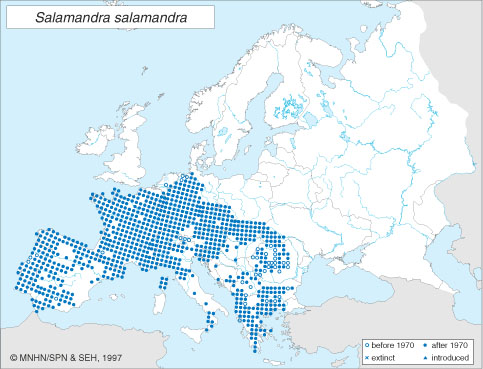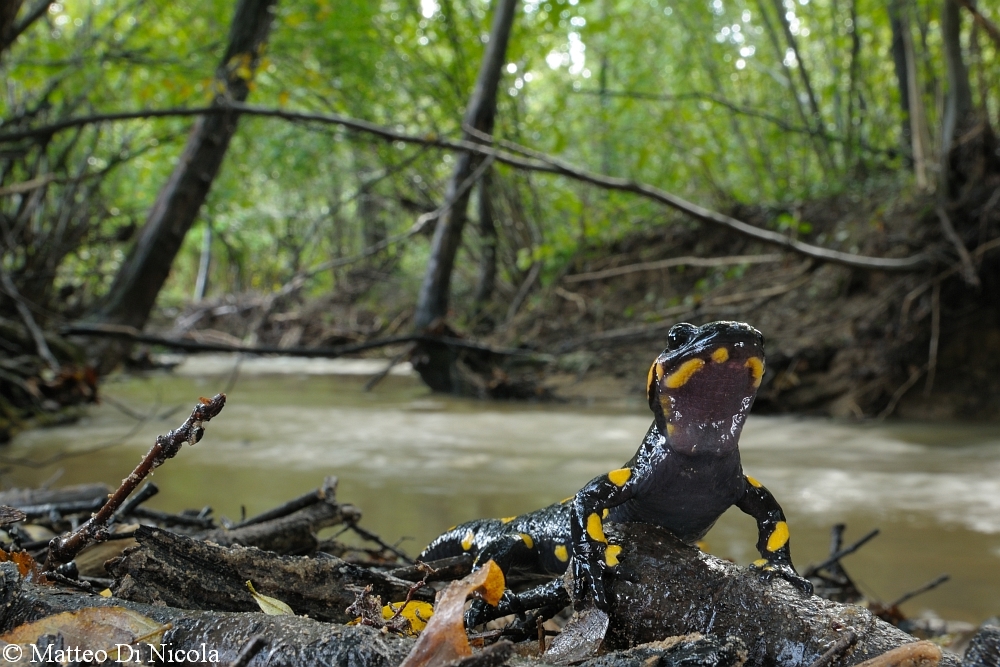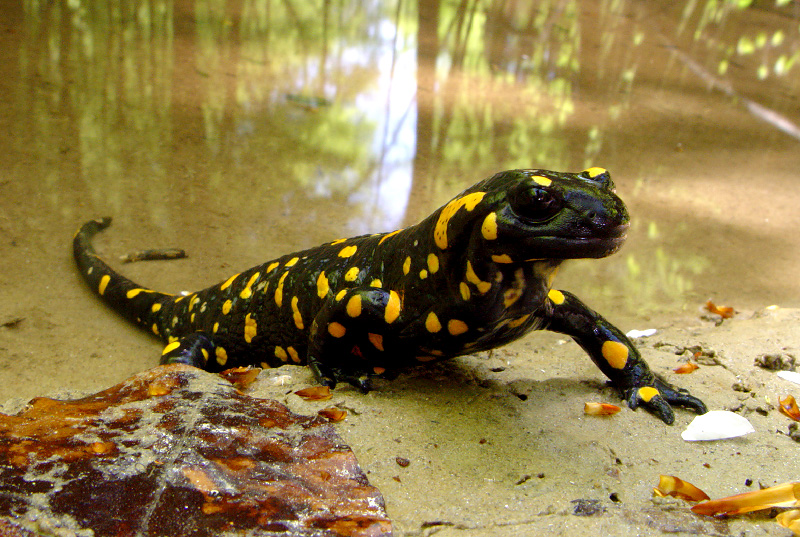Salamandra salamandra - Fire Salamander
Habitat

The species Salamandra salamandra is found in Southern Europe, North Africa, and Eastern Asia. The majority of fire salamanders can be found in the European countries of Poland, Hungary, and Germany. The fire salamander has two life cycle phases. The first stage, the larval stage, is completely aquatic, and the second stage, adulthood, is terrestrial. Most adult fire salamanders are burrowers or tend to live in fallen logs and under stones in a cool damp region. Fire salamanders are rarely seen, as they like to remain hidden and avoid open areas in most cases. During their breeding season, female fire salamanders will return to an aquatic environment, usually a pond or a lake in order to give birth to their young. After birth, they will remain in a larval stage in the water for three to five months until metamorphosis, after which they become terrestrial adults.
The main concern that fire salamanders have in their habitat is trying to stay cool, as they can overheat very easily. Each individual will have a different heat tolerance depending on the region in which they live. Most fire salamanders will best survive at a temperature of 60-65°F and will not tolerate an environment above 75°F. Fire salamanders also like to live near a very shallow pond so that they can soak themselves, without having to swim, as they are not very good swimmers as adults.
Other organisms that live near terrestrial adult fire salamanders in the cool deciduous forests of Southern Europe include squirrels and newts. In the larval stage, they will live amongst fish in an aquatic environment.
Habitat Destruction
![Photo showing a source of air polllution. Photo from the National Parks Service [Public Domain] via Wikimedia Commons](Air_.pollution_1.jpg) One threat to this species is habitat destruction. Currently
Salamandra salamandra is not endangered according to the
IUCN (red list) Status. That being said, their populations are
still decreasing. The decrease in population is mainly due to
habitat change or loss caused by deforestation and pollution. This species
is highly susceptible to the negative effects of pollution, whether it
be air or water pollution, as this organism has both terrestrial and
aquatic life stages. The use of pesticides and filling in their ponds are
devastating to the lives of these creatures.
One threat to this species is habitat destruction. Currently
Salamandra salamandra is not endangered according to the
IUCN (red list) Status. That being said, their populations are
still decreasing. The decrease in population is mainly due to
habitat change or loss caused by deforestation and pollution. This species
is highly susceptible to the negative effects of pollution, whether it
be air or water pollution, as this organism has both terrestrial and
aquatic life stages. The use of pesticides and filling in their ponds are
devastating to the lives of these creatures.
Now that we have seen the fire salamander's habitat, we will now move on to their specific Adaptations.
Go back to the Classification page, or return to the Home page.

